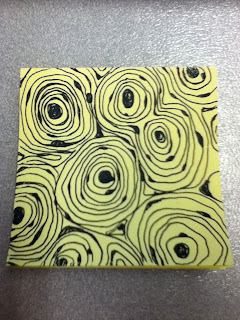What I did:
- Topic research (2 hrs)
- Read and research survey responses (1.5 hr)
- Plymouth District Library Visit (2hrs)
- Reading to family (.5hr)
- Discussing and Brainstorming book plots with others (1.5 hrs)
- Asking and listening about people's favorite childhood book (1 hr)
- Quick sketches of pages (1 hr)
- Storyboard (1 hr)
- Character Study (2 hrs)
What I accomplished/discovered:
I started the week off by sending an informal survey over facebook asking two seemingly simple questions. What was your favorite book as a child and why? I found that most people's responses fell into 3 categories: a) they could relate to the character is some aspect, b) it was bright, exciting and memorable (usually due to rhymes), and c) is was a charming story that had a message that remained relevant or meaningful into their adulthood. I have been looking at the suggested books for inspiration in storytelling and visual appeal. I have also been using this as a guide to form a successful story.
Another way to help with my story, I have been researching things about the relationship between kids and bone fractures. I found that arms are the most common broken bone. "About one in 20 fractures involve the upper arm bone (humerus). Children are more likely to break the lower arm bones (radius and ulna)." (AAOS) I also furthered my knowledge on bone remodeling by researching how bones fractures heal as well as different types of breaks and what kind of force causes them. I made sure that the resource I was using was specifically for children (Kid's Health). From these and other resources, I have decided that my main character will fall from a tree, use her arms to cushion her fall and have a single closed oblique displaced fracture in the radius and ulna of her right arm. She gets a fiberglass cast (in yellow of course, it's her favorite color) and it stays on for 4 weeks (young bones are much more resilient that older bones).
This weekend, I visited the library in Plymouth, my hometown. The children's section is immense there as are it's resources. The librarian was very helpful in finding the books I was interested in. She was also able to recommend several books about book illustrators and how to write and publish a successful children's book. I spent a lot of time browsing the featured books and pulling a ton more off the shelf to read later.... And read I did. I read aloud to my family, my roommate, and by myself.
While I was home, I took advantage of the fact I had a great focus group to my disposal: different ages, perspectives, tastes and a common love for books. It was helpful to run my three concepts by family so we could quickly weed out the less developed ideas and run with the good ones. My family's wild imagination led to some interesting suggestions and led me down some new paths. We decided that the xray glasses had the most potential. They urged me to use the book as a tool to make broken bones and doctor's offices less scary. They also know thought that I should make it playful and interactive. We thought there could be glasses that come with the book or ways that I could make the bones show through without turning the page. It was a refreshing and helpful start to the week.
Throughout the week I have been quickly sketching images and scenes that came into my head when I thought about my story. I won't be using all of the images, but it acts as a nice reference and reminder. I also laid out a rough storyboard. It was much harder to put everything in sequential order that I originally thought. My story still has some gaps. I'm hoping my character study will help.
For my character study, I practiced drawing little girls that could potentially be my character. I worked from realistic to stylistic. I think my character (Kay) is the right mix of reality and cartoony. It helped also to write down all of her features/traits/likes to better realise her in a physical way. Check it out!
What's Next:
Next I will rewrite my storyboard for Tuesday with more evolved plot and visuals. I will begin some more detailed drawings for Thursday so I have more images to submit for my grant application. I will also get in contact with some grade school librarians so I can use them and their classes as resources.

























